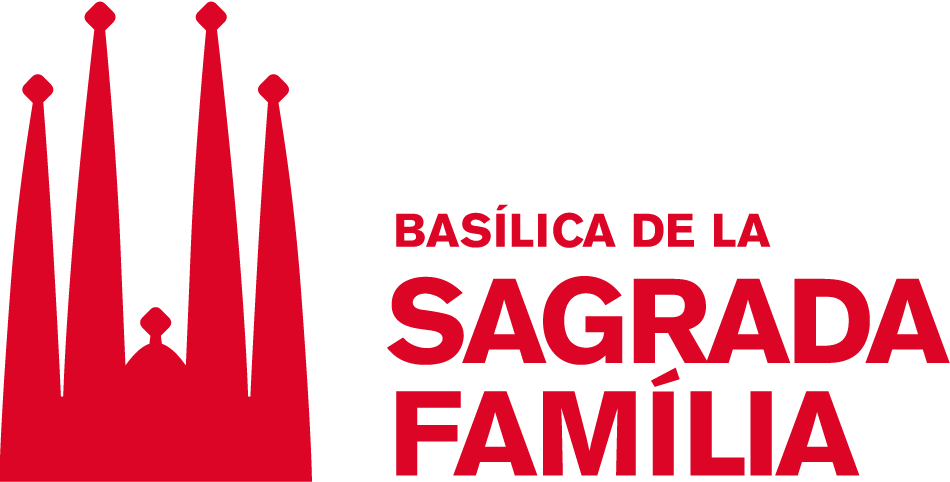History of the Temple - Sagrada Família
HISTORY OF THE BASÍLICA
The Sagrada Família is a one-of-a-kind temple, for its origins, foundation and purpose. Fruit of the work of genius architect Antoni Gaudí, the project was promoted by the people for the people. Five generations now have watched the Temple progress in Barcelona. Today, more than 140 years after the laying of the cornerstone, construction continues on the Basilica.
The Sagrada Família is a truly exceptional temple, the result of the work of genius architect Antoni Gaudí. Today, more than 135 years after the laying of the cornerstone, construction continues on the Basilica.
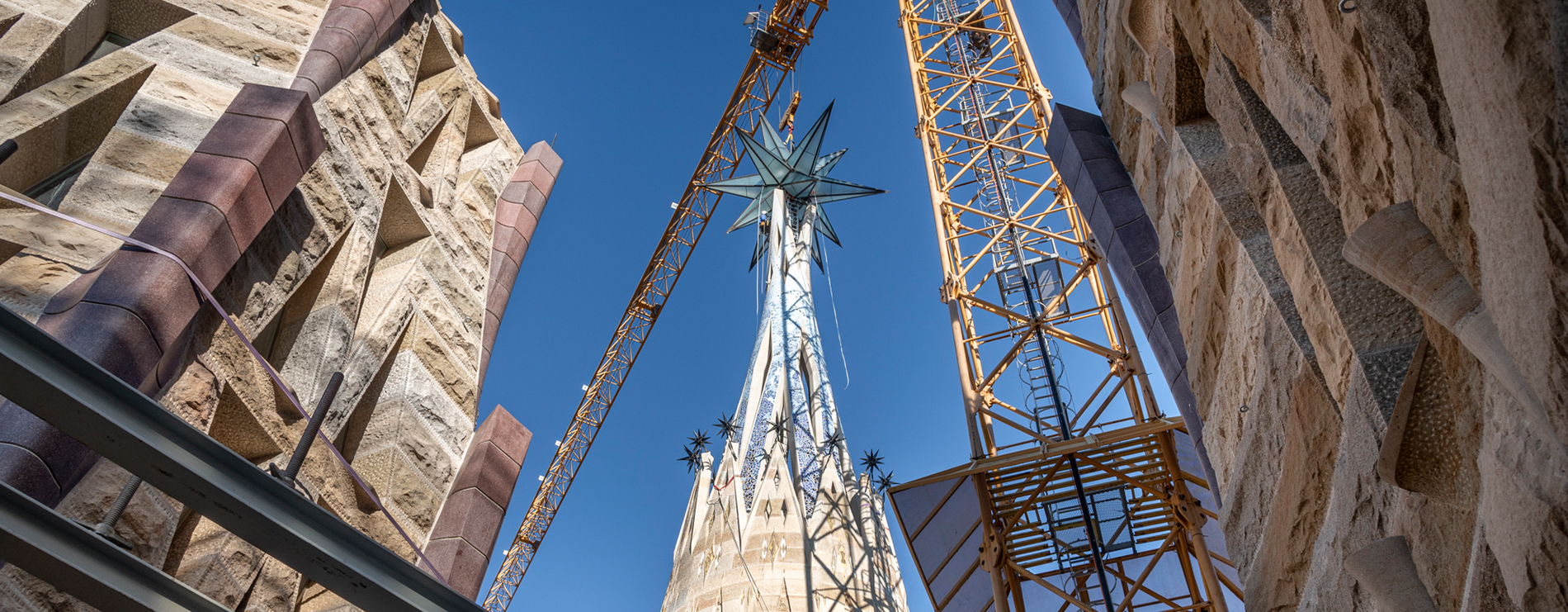
espai blanc
espai blanc
espai blanc
MAIN MILESTONES
1882
Project designed by Francisco de Paula del Villar.
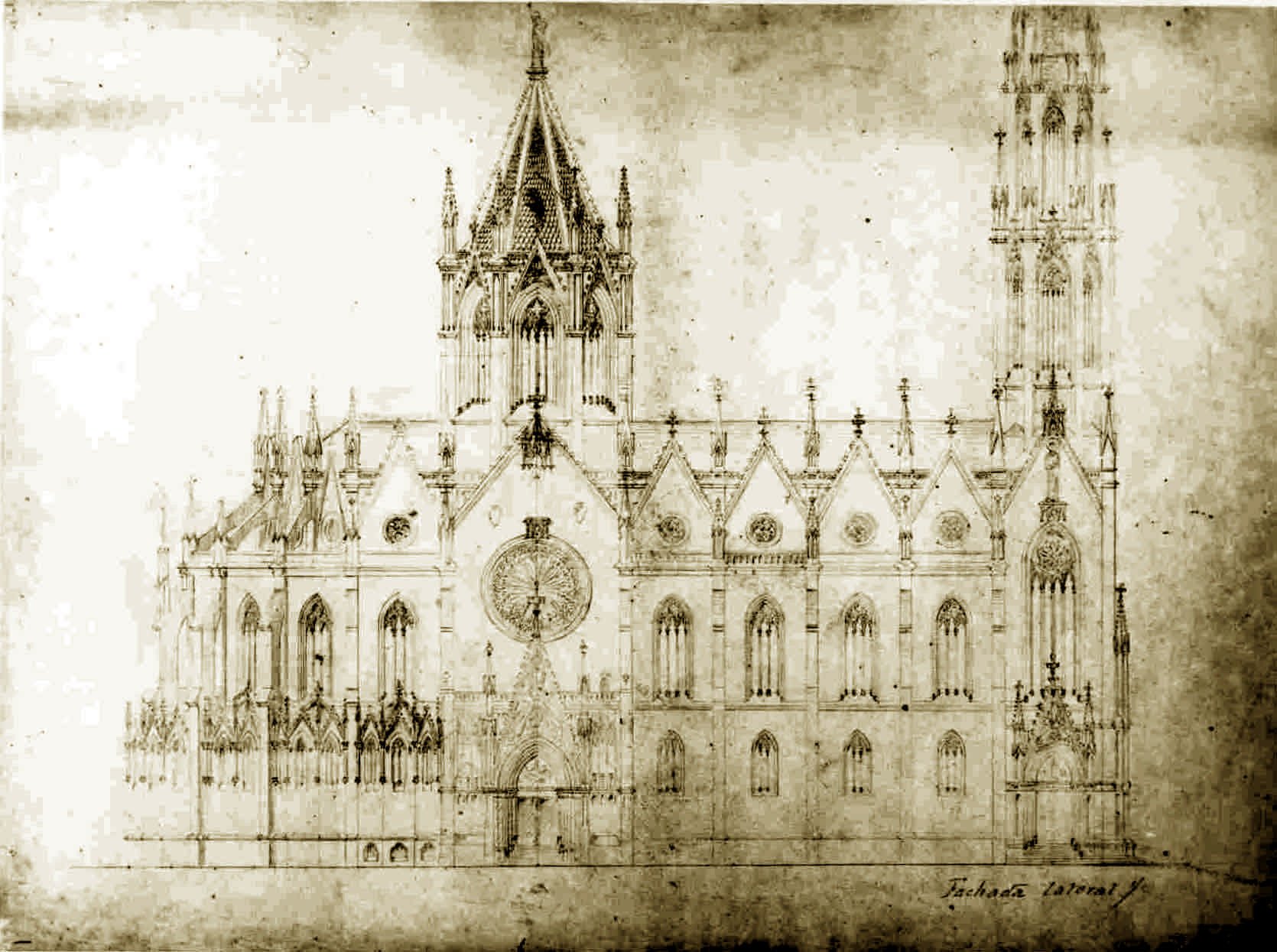
On 19 March, Bishop Urquinaona lays the cornerstone of the Temple.
1883
Antoni Gaudí takes over the project, while still working on other buildings.
1885
Chapel of Saint Joseph inaugurated in the crypt and first masses held.
1891
Work begins on the Nativity façade.
1914
Antoni Gaudí begins working exclusively on the Temple, until his death.
1925
Saint Barnabas bell tower on the Nativity façade is completed.
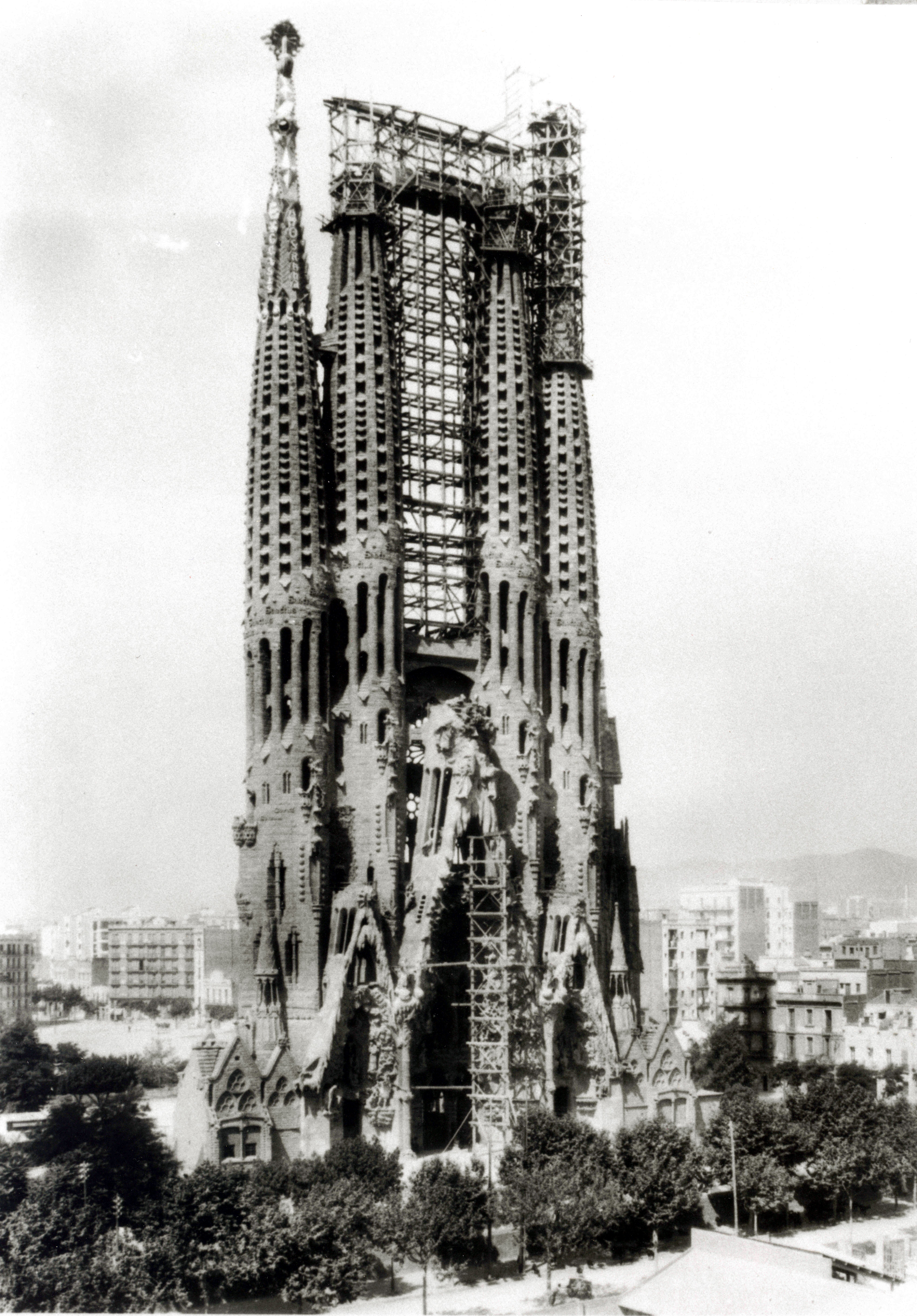
1926
Gaudí dies and his disciple Domènec Sugranyes takes over the project.
1936
La Sagrada Família is vandalised during the Spanish Civil War. Plans and photographs are burnt and the plaster models, smashed.
1939
Francesc de Paula Quintana takes over site management, which is able to go on thanks to the material that could be saved from Gaudí’s workshop and that was reconstructed from published plans and photographs.
1952
Staircase on the Nativity façade is built, and the façade is lit up for the first time.
1954
Foundation laid for the Passion façade.
1955
The first collection is held.
1958
On 19 March, the feast of Saint Joseph, a sculpture group representing the Holy Family is put in place, created by Jaume Busquets.
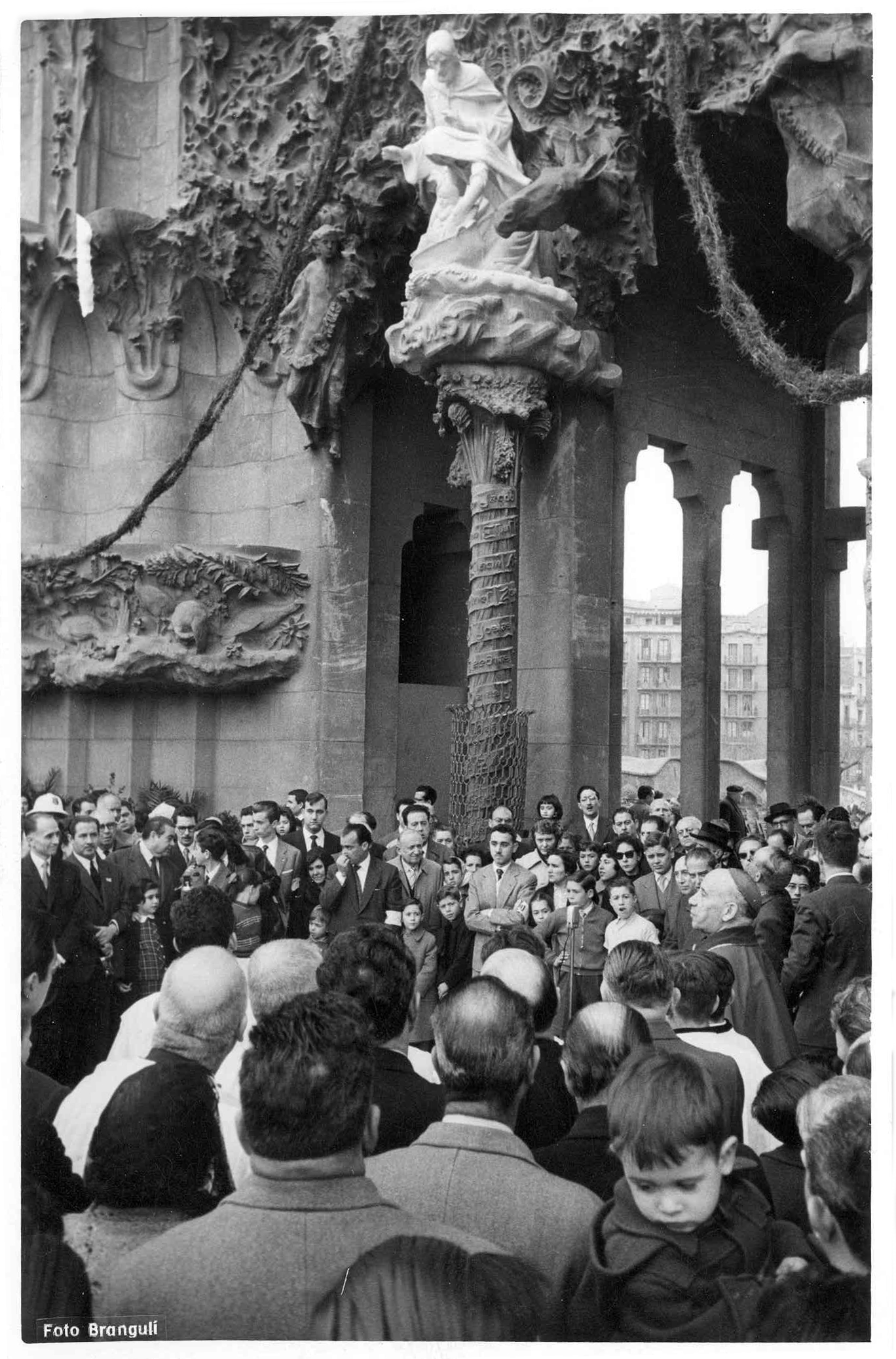
1961
Museum created to explain historical, technical, artistic and symbolic aspects of the Temple to visitors.
1966
Francesc de Paula Quintana dies and Isidre Puig i Boada and Lluís Bonet i Garí take over.
1976
Bell towers on the Passion façade completed.
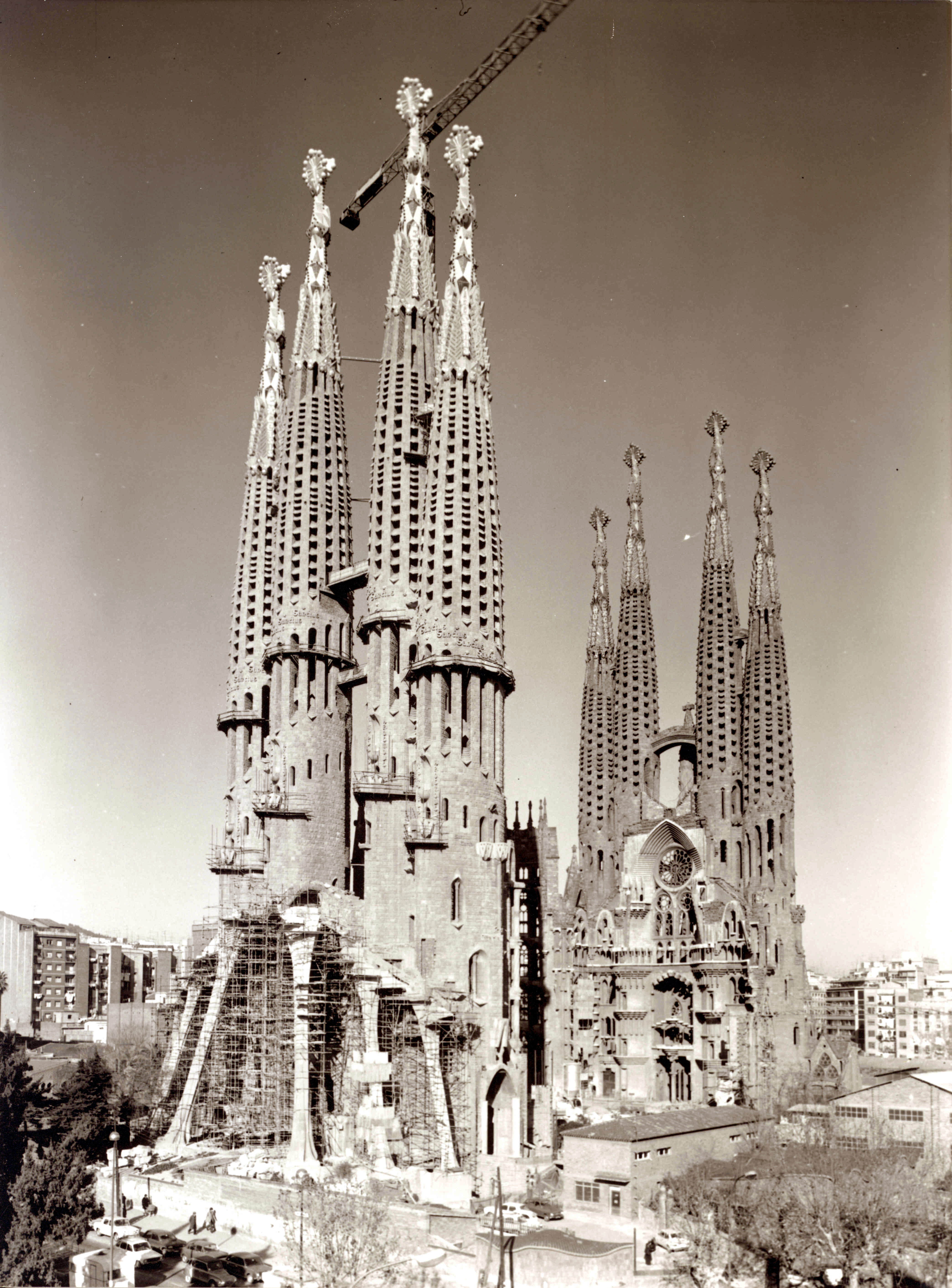
1978
Construction begins on the façades on the side naves.
1983
Francesc Cardoner i Blanch takes over the project.
1985
Jordi Bonet i Armengol is named head architect and site manager.
1986
Josep Maria Subirachs is commissioned to make the sculpture groups for the Passion façade.
1986
Work began on the foundations for all the naves, the columns, vaults and façades on the main nave, transepts, crossing and apse. The works were completed in 2010.
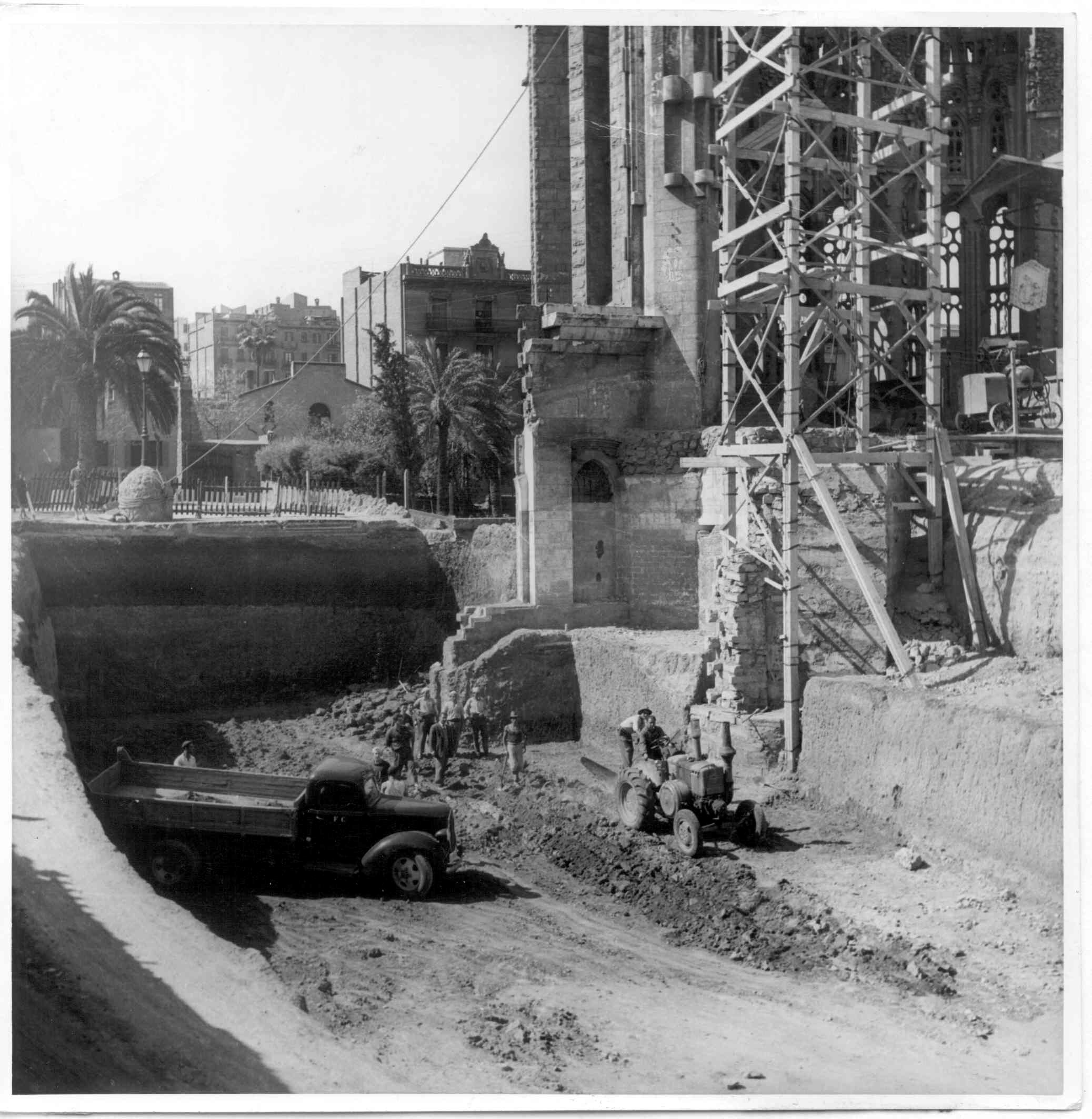
2005
The Nativity façade and crypt are named UNESCO world heritage.
2010
On 7 November 2010, Pope Benedict XVI consecrated the Basilica for religious worship and designated it a minor basilica.
2011
2010 Barcelona City Award in Architecture and Urban Planning goes to the Temple nave.
2012
Jordi Faulí takes over from Jordi Bonet as head architect and site manager for the works on the Temple of the Sagrada Família, which carry on according to Antoni Gaudí’s plans.
2016
Construction begins on the towers of the Evangelists, the Virgin Mary and Jesus Christ.
Work is completed on the western sacristy and the cloister of Our Lady of Dolours.
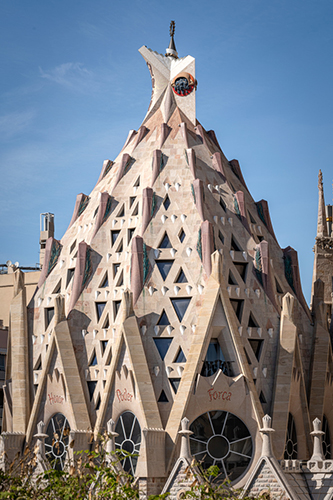
2018
July 2018 The Cross is placed on top of the pediment of the Passion façade.
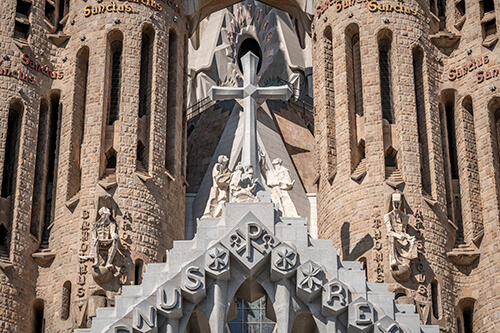
2019
The first stone panels arrive for the tower of Jesus Christ, the tower of the Evangelists and the tower of the Virgin Mary and they start to take shape.
2020
February 2020 The tower of Jesus Christ and the tower of the Virgin Mary surpass the height of the towers on the Passion and Nativity façades.
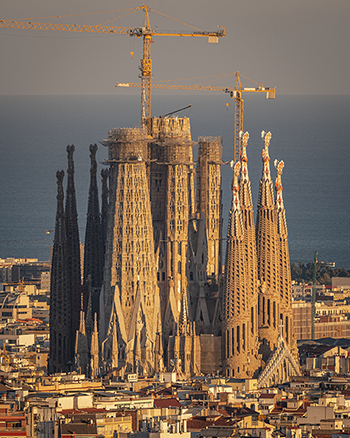
March 2020 The Junta Constructora de la Sagrada Família stops construction due to the Covid-19 healthcare emergency.
October 2020 Work resumes, focusing on completing the tower of the Virgin Mary, with all the levels of panels in place and only the elements of the 25-metre pinnacle remaining, which will be crowned with a shining twelve-pointed star.
2021
In 2021 all efforts focus on finishing the tower of the Virgin Mary, the Basilica’s second tallest at 138 metres.

In April 2021, construction began on the shaft, the middle part of the pinnacle of the tower of the Virgin Mary, which is 18 metre tall and starts from six legs and ends in three arms that hold up the luminous star. During this month, the formwork and reinforcement for the lower third of the shaft was put in place, a piece measuring 10.8 metres tall that clearly changes the city's skyline, since it raises the tower to a height of 127 metres. It is the longest piece (10.80 metres) that has been raised so far on the Sagrada Família.
In July 2021, the shaft was covered with trencadís mosaic. The lower part of the shaft is now in place. The upper and lower part of the shaft are covered with artistic ceramic stoneware trencadís mosaic in colours ranging from blue to white with a few scattered pieces of golden Venetian mosaic.
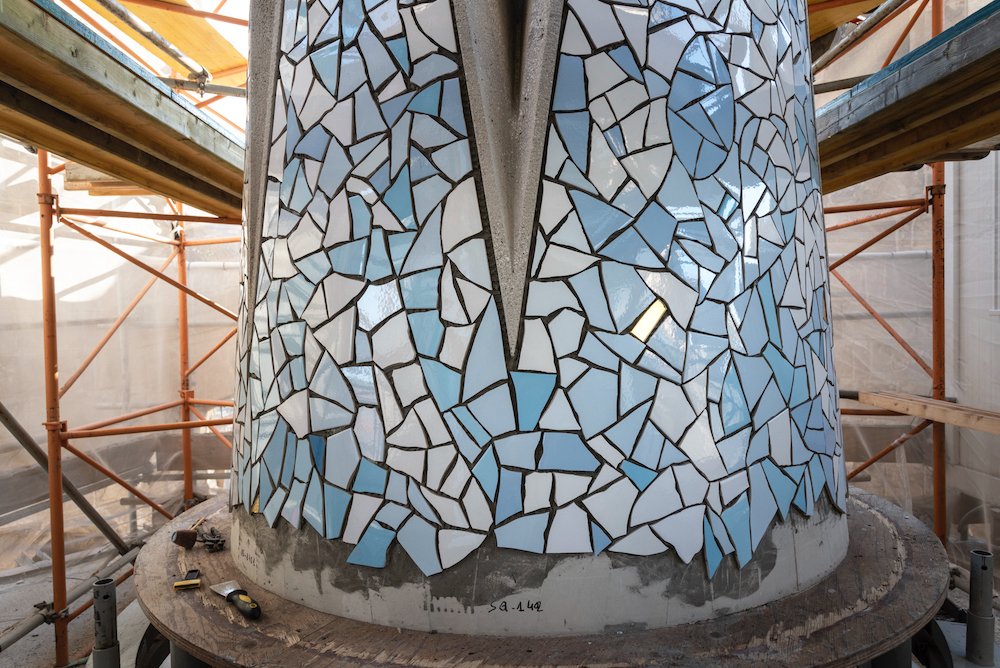
In September 2021, the upper third of the shaft of the tower of the Virgin Mary was put in place. With the upper third of the tower of the Virgin Mary put in place, the tower reaches 134 metres.
On November 9, the twelve wrought-iron stars that top the crown on the tower of the Virgin Mary were placed.
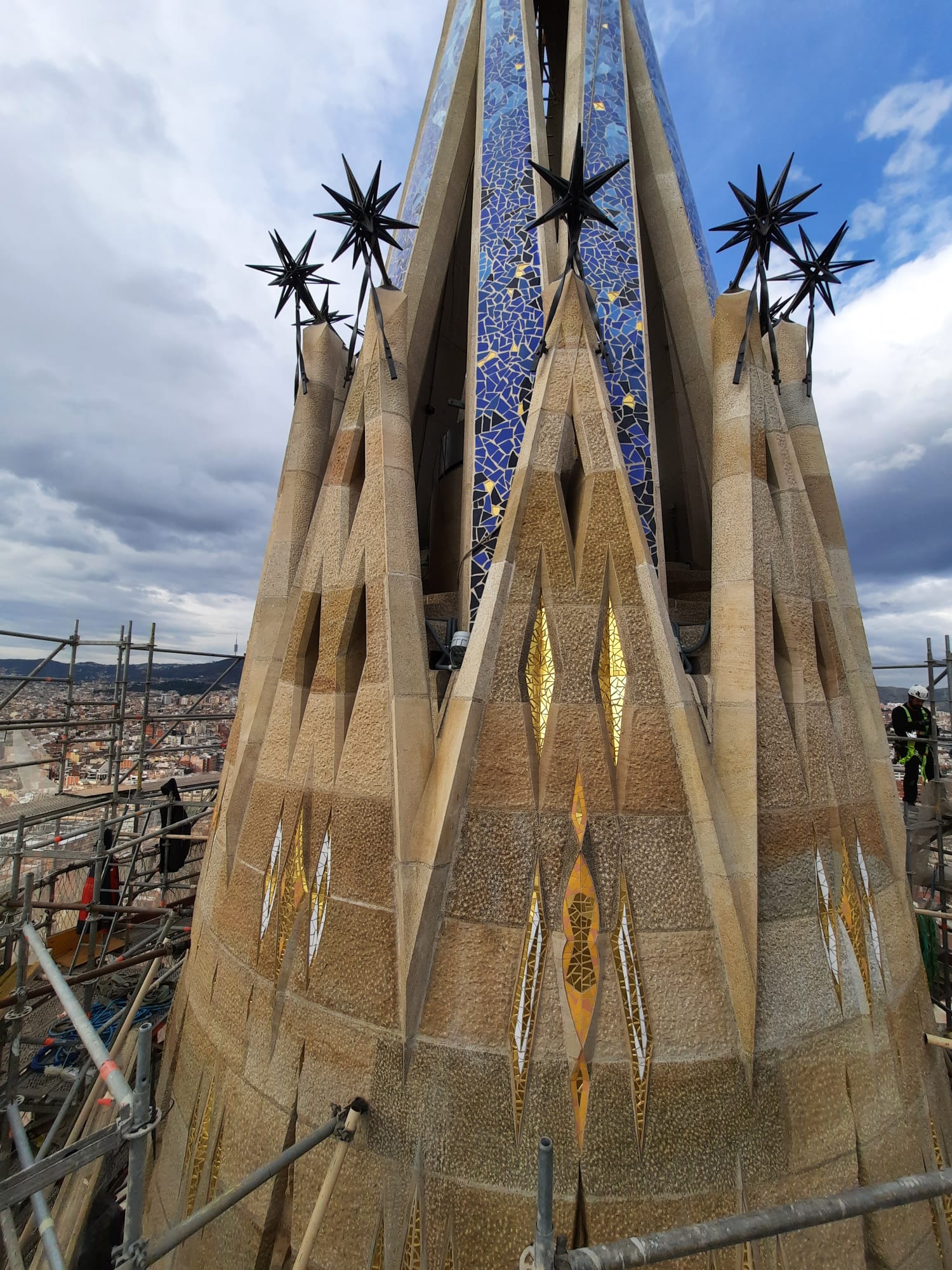
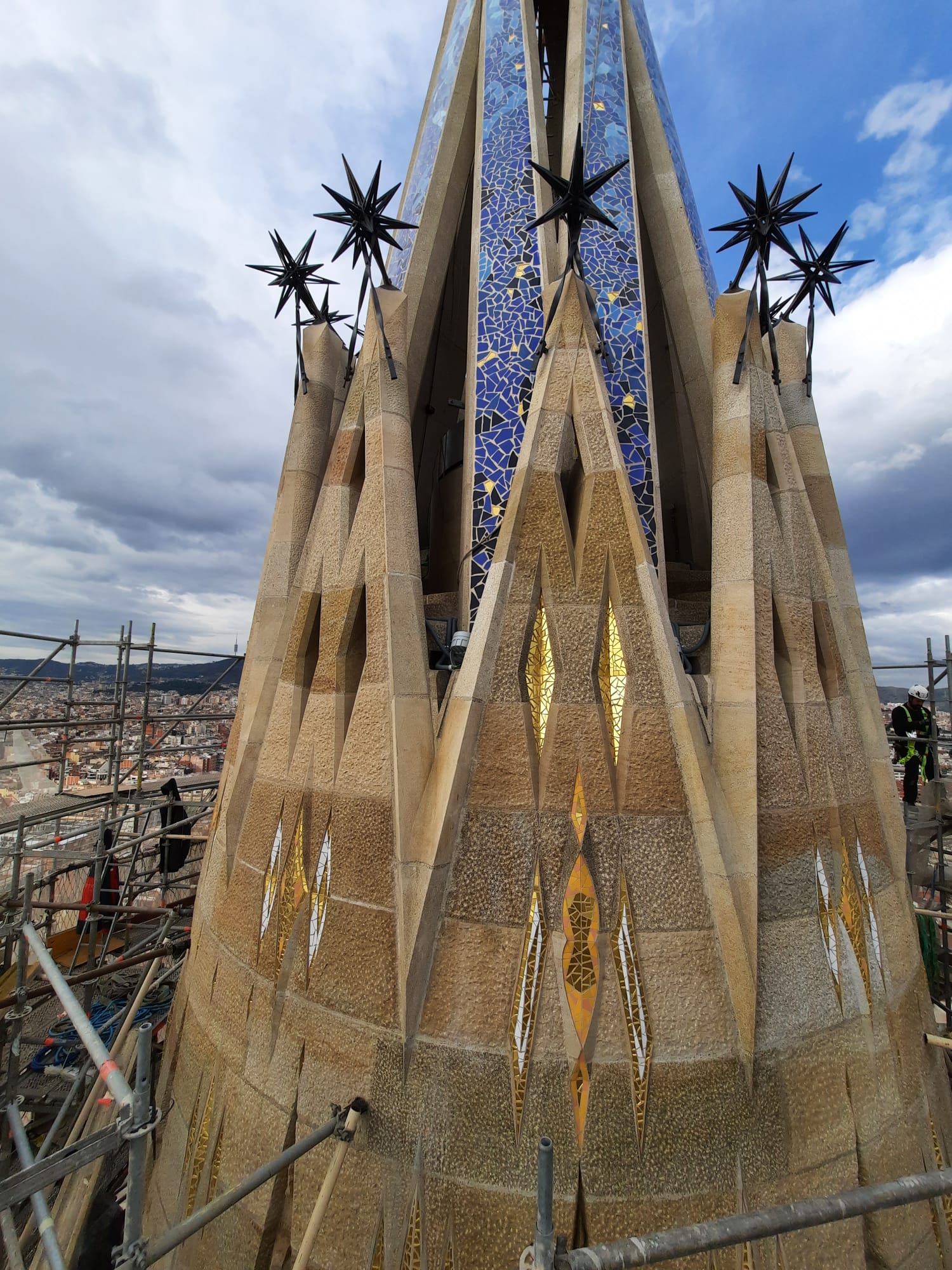
On November 29, the Sagrada Família lifted the star of the Virgin Mary into place. This was a historic moment, as it is the final piece of the tower and changes the Barcelona skyline.
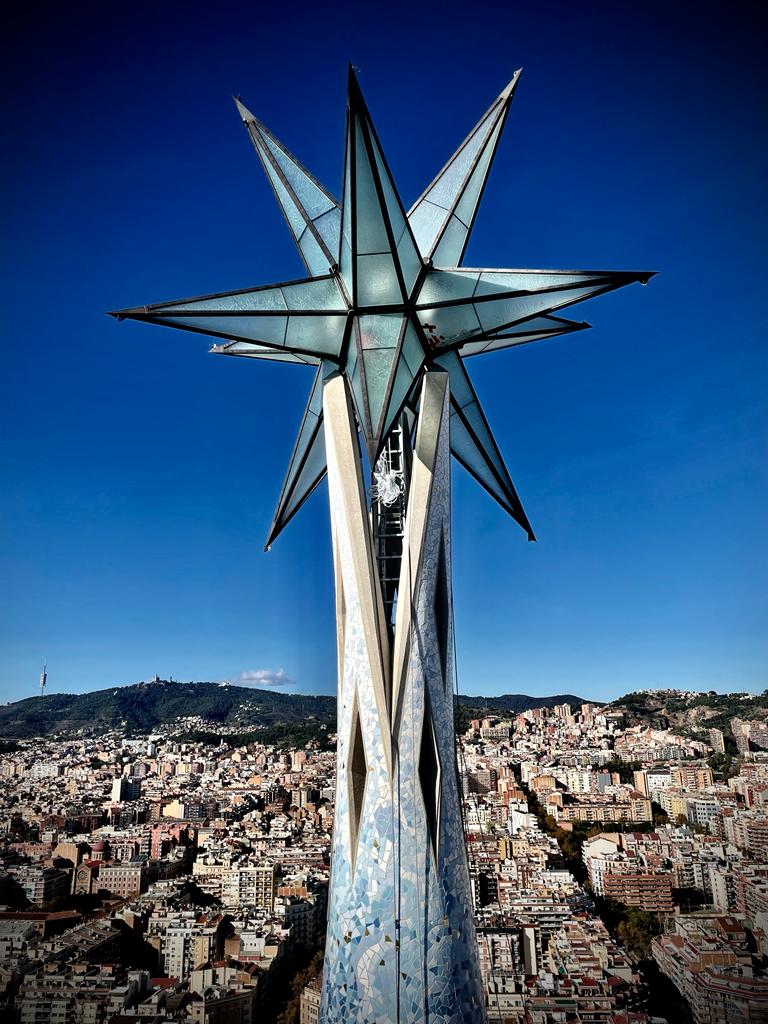
On 8 December 2021, the Sagrada Família inaugurated the tower of the Virgin Mary with a mass as the central event and, afterwards, the blessing of the tower and the first lighting of the star on the second-tallest tower, which is now complete.
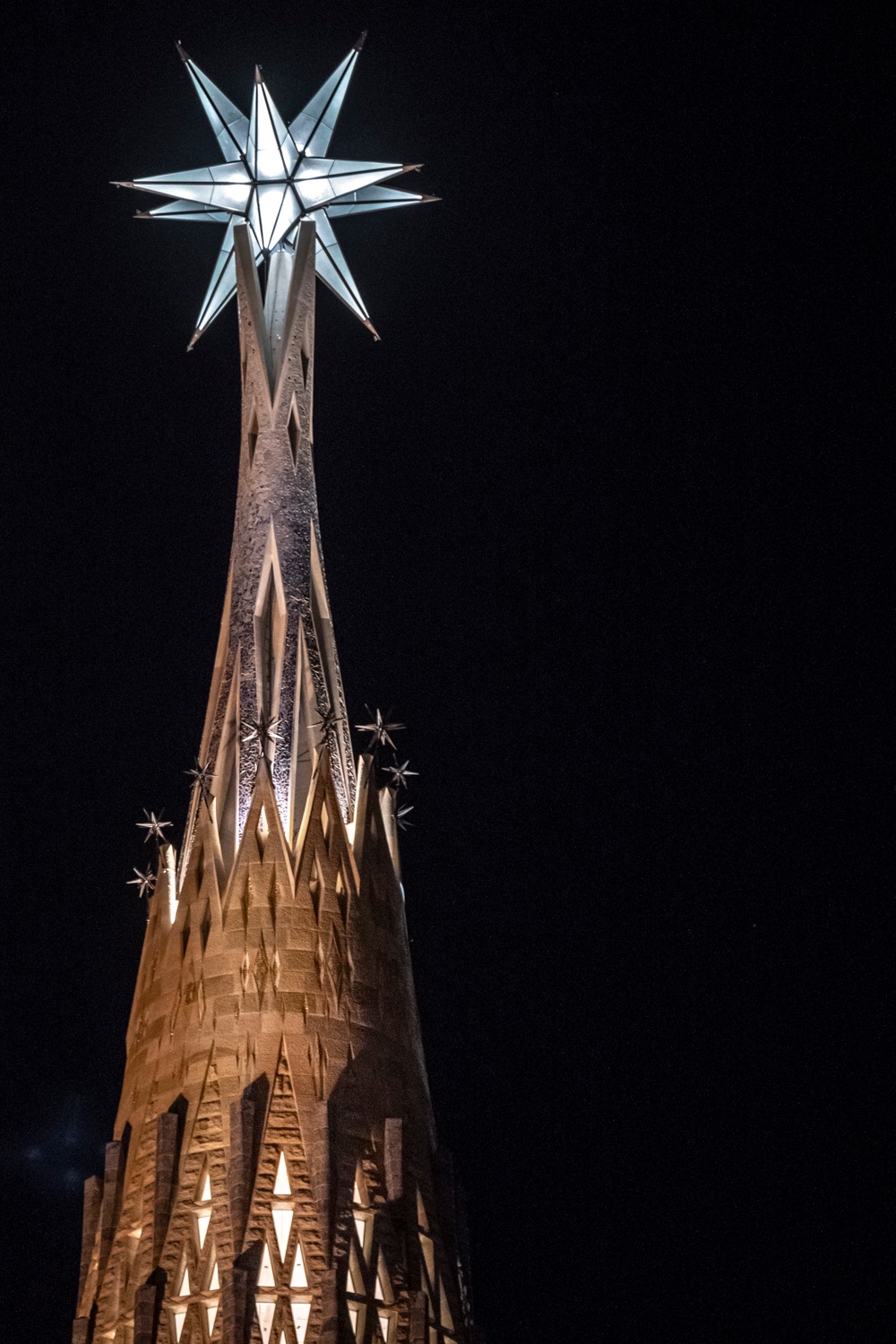
2022
In 2022, two of the four towers of the Evangelists were completed: Luke and Mark. The tower of Jesus Christ gained two levels, taking it up to the eighth out of twelve in total, standing at 125.85 metres. On 16 December 2022, the pinnacles of the towers of the Evangelists Luke and Mark will be lit for the first time. These are two of the four towers of the Evangelists that are part of the central group of towers.

2023
On 12 November 2023 the Sagrada Família inaugurated the four the towers of the Evangelists, with the central event of the mass and the subsequent blessing and lighting up for the first time. As part of the central group of towers, the four towers of the Evangelists surround the tower of Jesus Christ and are the Temple’s third tallest, standing 135 metres tall. Together with the tower of the Virgin Mary, five of the six central towers have been completed. The central tower of Jesus Christ is scheduled for completion in 2026.
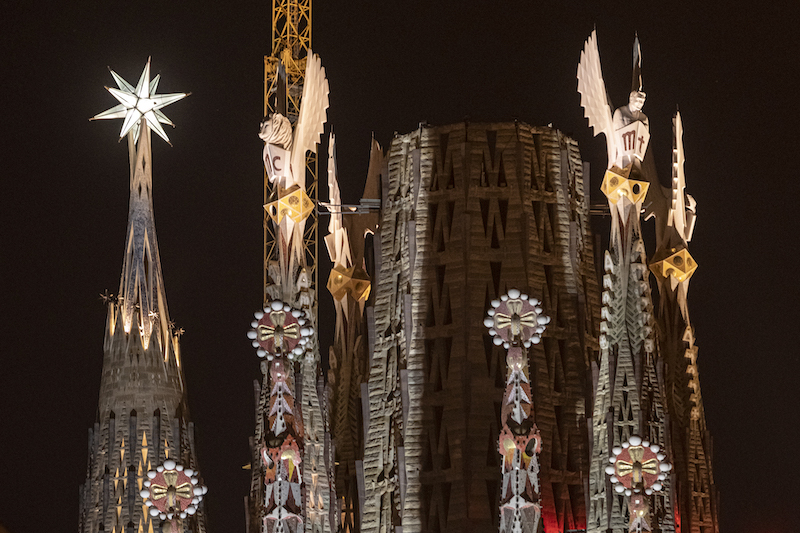
espai blanc
espai blanc
espai blanc
